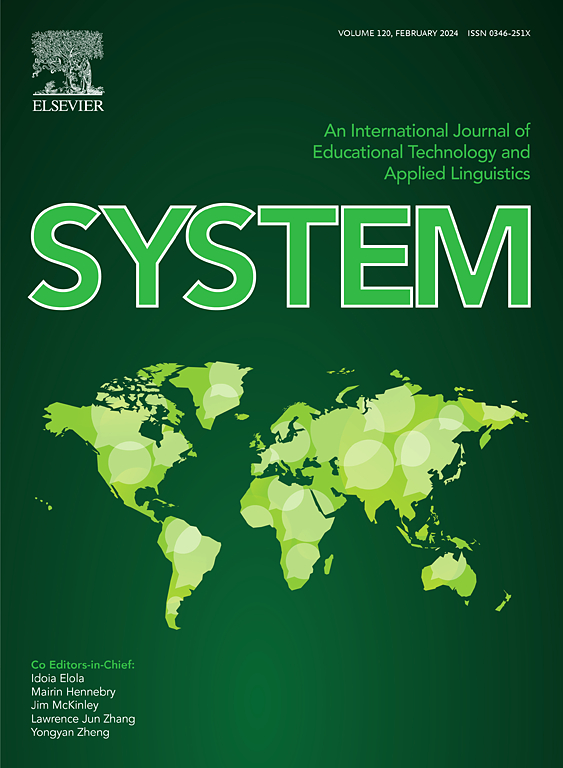将实际的第二语言自我概念化为第二语言动机自我系统
IF 4.9
1区 文学
Q1 EDUCATION & EDUCATIONAL RESEARCH
引用次数: 0
摘要
二语动机研究对可能的二语自我给予了相当大的关注。实际的二语自我在二语动机的形成中也起着重要的作用,但实际的二语自我的概念仍然没有明确的定义。本研究通过人-情境关系(PCR)观点考察了实际第二语言自我的本质及其与可能第二语言自我的关系(Ushioda, 2009)。采用视觉方法(Magid &;Chan, 2012),本研究收集了179名来自不同教学环境的中国中学一年级英语外语学习者的第二语言自我的图片,其中大多数是13岁。在一学年的时间里,对18名重点参与者进行了课堂观察、刺激回忆访谈和半结构化访谈,以调查他们的第二语言自我以及语境对他们第二语言自我感知的影响。研究结果表明,学生的实际二语自我主要包括(1)英语能力;(2)身份;(三)对待英语学习的态度。实际二语自我的建构在不同的学习经历和教学环境中是不同的。本研究讨论了将二语自我理论化的意义,以及通过促进二语自我的发展来支持二语学习者的方法。本文章由计算机程序翻译,如有差异,请以英文原文为准。
Conceptualising the actual L2 self into the L2 motivational self system
L2 motivation research has given considerable attention to possible L2 selves. The actual L2 self also plays a significant role in shaping L2 motivation, yet the concept of the actual L2 self is still not clearly defined. The present study examined the nature of the actual L2 self and its relationship with possible L2 selves through the person-in-context relational (PCR) view (Ushioda, 2009). Employing the visual methods (Magid & Chan, 2012), this study gathered picture-drawings that captured the L2 selves of 179 Chinese secondary year one English as foreign language learners from diverse instructional contexts, the majority of whom were 13 years old. Classroom observations, stimulated recall interviews, and semi-structured interviews were then conducted among 18 focal participants in one academic year to investigate their L2 selves and the contextual influences on their L2-self perceptions. The findings indicate that students’ actual L2 selves mainly consist of (i) English competence; (ii) identity; and (iii) attitudes towards English learning. The construction of the actual L2 selves vary across diverse learning experiences and instructional contexts. The study discusses the implications for theorising the actual L2 self and ways to support L2 learners by fostering the development of their actual L2 selves.
求助全文
通过发布文献求助,成功后即可免费获取论文全文。
去求助
来源期刊

System
Multiple-
CiteScore
8.80
自引率
8.30%
发文量
202
审稿时长
64 days
期刊介绍:
This international journal is devoted to the applications of educational technology and applied linguistics to problems of foreign language teaching and learning. Attention is paid to all languages and to problems associated with the study and teaching of English as a second or foreign language. The journal serves as a vehicle of expression for colleagues in developing countries. System prefers its contributors to provide articles which have a sound theoretical base with a visible practical application which can be generalized. The review section may take up works of a more theoretical nature to broaden the background.
 求助内容:
求助内容: 应助结果提醒方式:
应助结果提醒方式:


